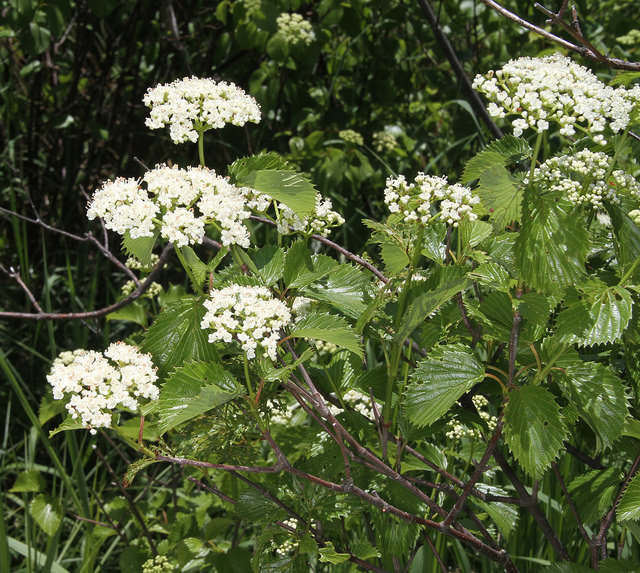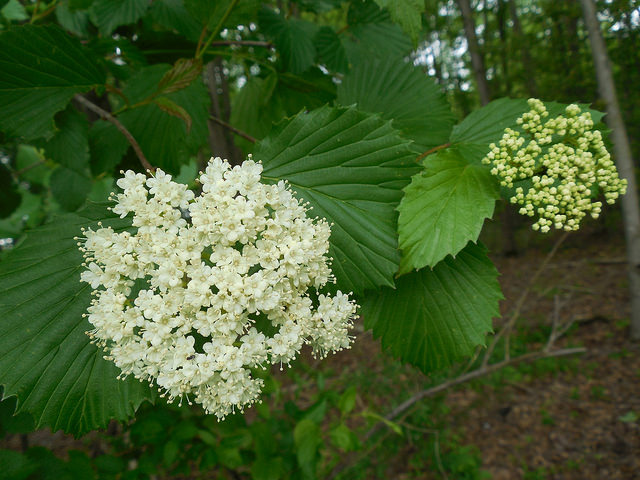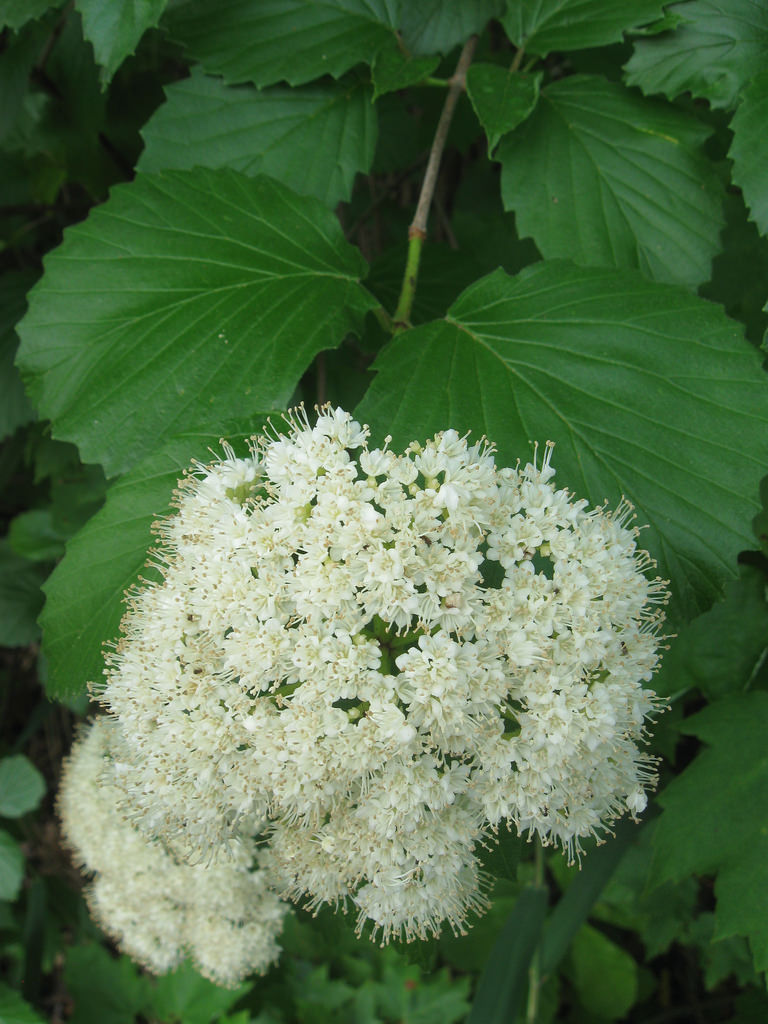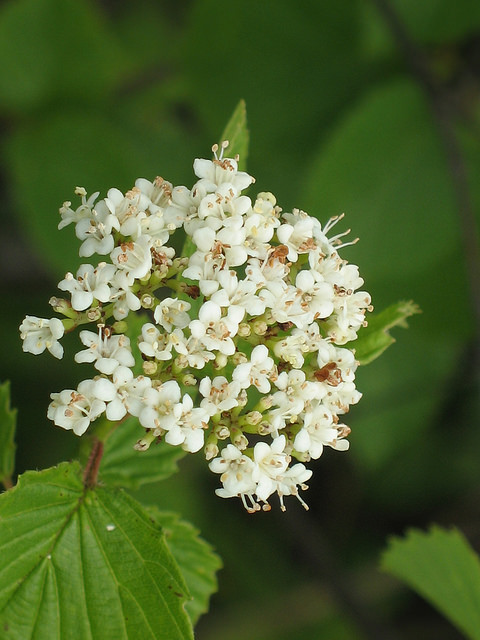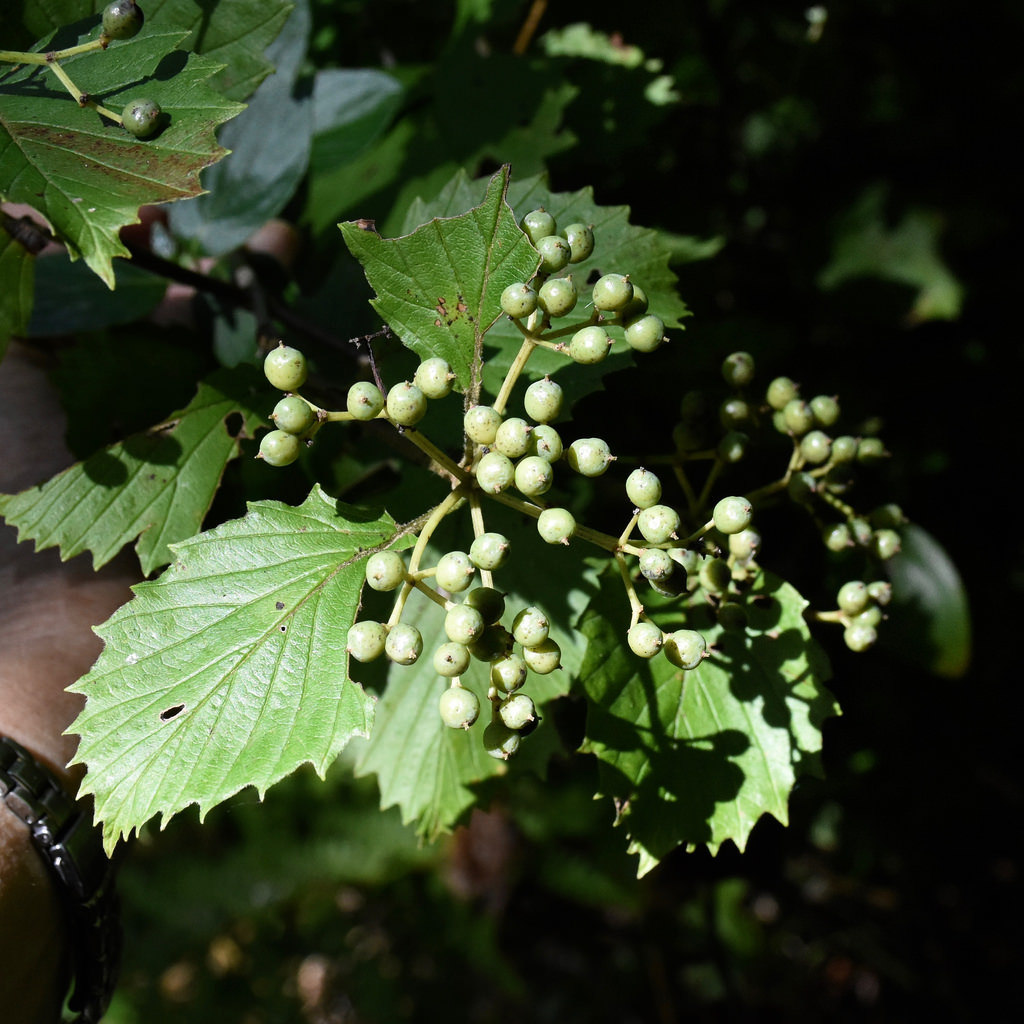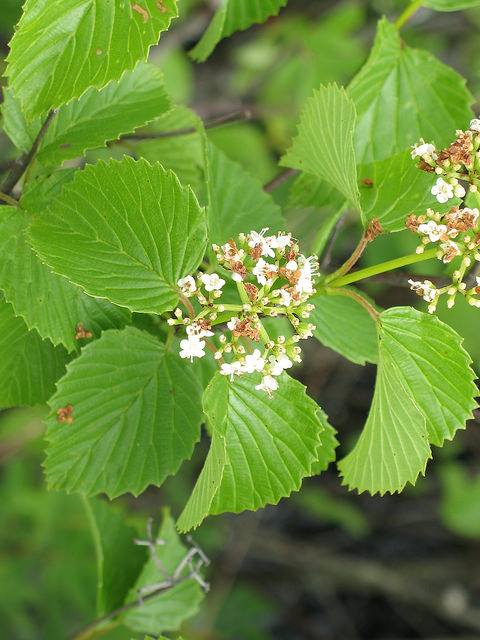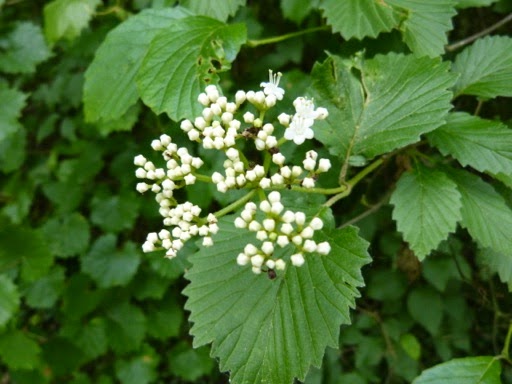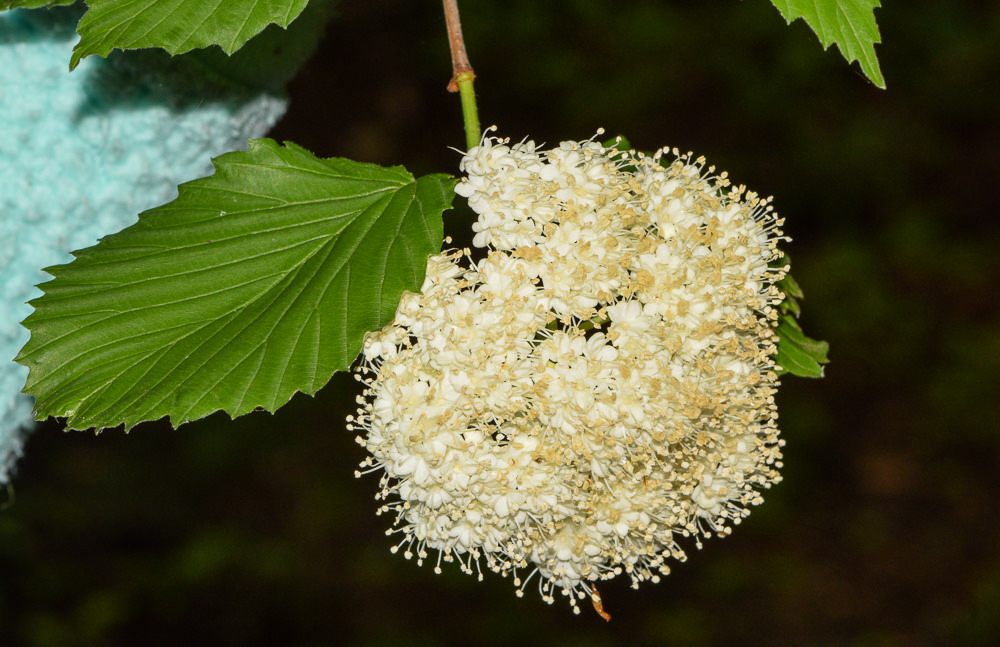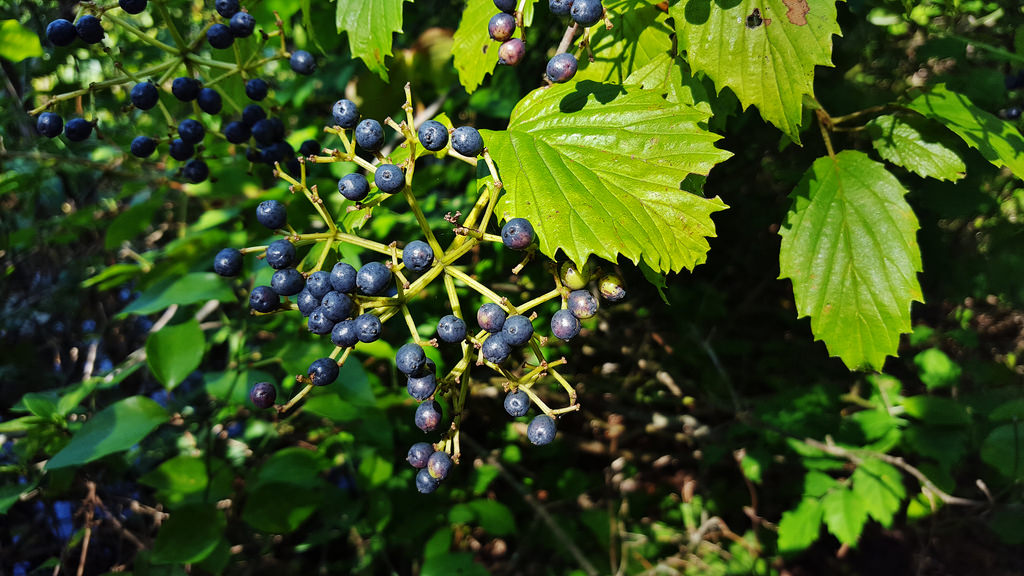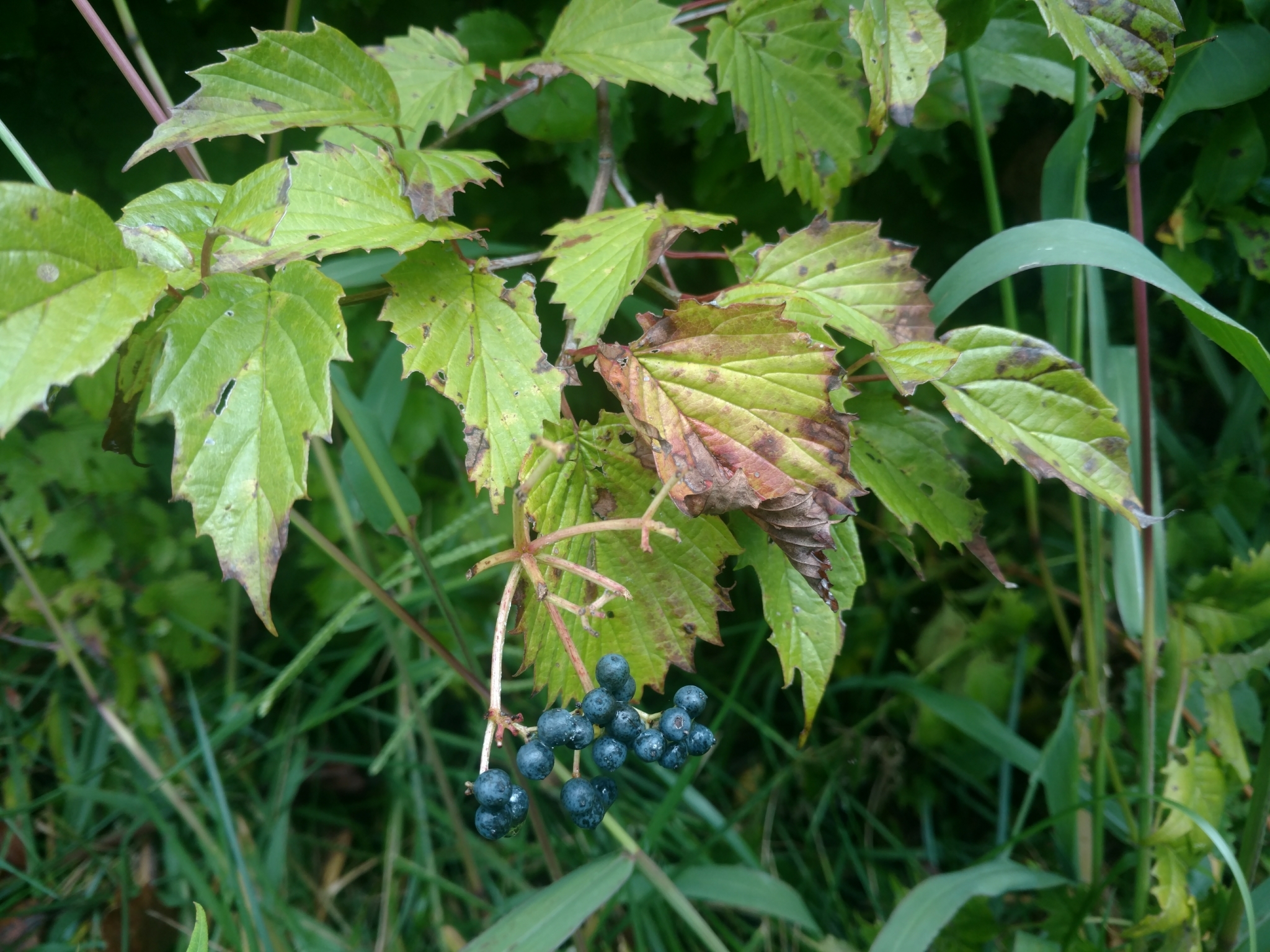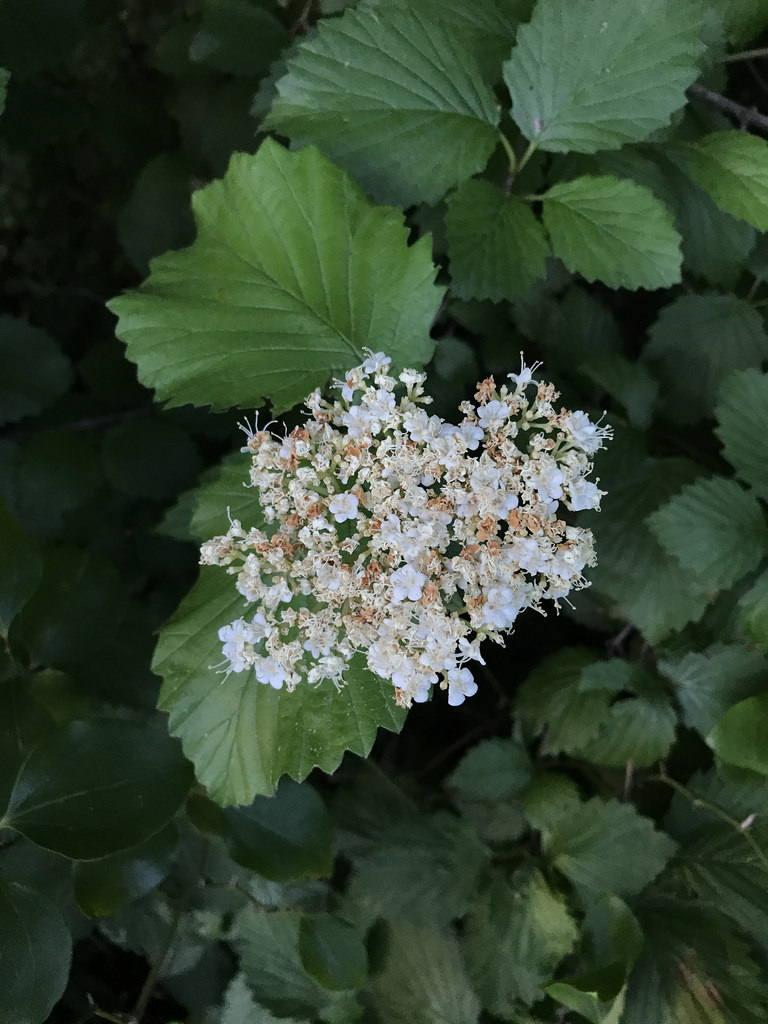Map Snapshot

























433 Records
Status
Two varieties of Southern Arrowwood are found in Maryland: Viburnum dentatum var. dentatum and Viburnum dentatum var. lucidum.
Seasonality Snapshot
Source: Wikipedia
| Viburnum dentatum | |
|---|---|

| |
| Scientific classification | |
| Kingdom: | Plantae |
| Clade: | Tracheophytes |
| Clade: | Angiosperms |
| Clade: | Eudicots |
| Clade: | Asterids |
| Order: | Dipsacales |
| Family: | Adoxaceae |
| Genus: | Viburnum |
| Species: | V. dentatum
|
| Binomial name | |
| Viburnum dentatum | |
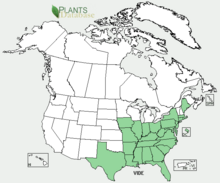
| |
| Natural range in the United States (Canadian range not shown) | |
Viburnum dentatum, southern arrowwood or arrowwood viburnum or roughish arrowwood, is a small shrub, native to the eastern United States and Canada from Maine south to northern Florida and eastern Texas.
Like most Viburnum, it has opposite, simple leaves and fruit in berry-like drupes. Foliage turns yellow to red in late fall. Localized variations of the species are common over its entire geographic range. Common differences include leaf size and shape and placement of pubescence on leaf undersides and petioles.
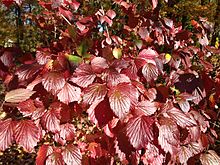
Some moth larvae feed on V. dentatum. Known such species include the unsated sallow (or arrowwood sallow; Metaxaglaea inulta) and Phyllonorycter viburnella. It is also consumed by the viburnum leaf beetle (Pyrrhalta viburni), an invasive species from Eurasia.[2] The fruits are a food source for songbirds. Berries contain 41.3% fat.[3]
The fruits appear blue. The major pigments are cyanidin 3-glucoside, cyanidin 3-sambubioside, and cyanidin 3-vicianoside, but the total mixture is very complex.[4]
Native Americans used the young stems to make arrow shafts.[5]
Varieties
[edit]- Viburnum dentatum var. deamii (Rehder) Fernald
- Viburnum dentatum var. dentatum
- Viburnum dentatum var. lucidum Fernald – currently considered a separate species; Viburnum recognitum, the northern arrowwood, or smooth arrowwood
- Viburnum dentatum var. venosum (Britton) Gleason
References
[edit]- ^ NatureServe (30 June 2023). "Viburnum dentatum". NatureServe Network Biodiversity Location Data accessed through NatureServe Explorer. Arlington, Virginia: NatureServe. Retrieved 9 July 2023.
- ^ Paul A. Weston; E. Richard Hoebeke (2003). "Viburnum leaf beetle, Pyrrhalta viburni (Paykull) (Coleoptera: Chrysomelidae): Dispersal pattern of a palearctic landscape pest in New York and its distribution status in the northeastern U.S. and eastern Canada". Proceedings of the Entomological Society of Washington. 105 (4): 889–895. Retrieved 9 July 2023 – via biostor.org.
- ^ Smith, Susan B.; McPherson, Kathleen H.; Backer, Jeffrey M.; Pierce, Barbara J.; Podlesak, David W.; and McWilliams, Scott R. "Fruit quality and consumption by songbirds during autumn migration." The Wilson Journal of Ornithology, 2007, volume 119, issue 3, pages 419-428, doi:10.1676/06-073.1
- ^ Francis F.J. and Markakis, Pericles C. "Food colorants: Anthocyanins." Critical Reviews in Food Science and Nutrition, 1989, Volume 28, Issue 4, pages 273-314, doi:10.1080/10408398909527503
- ^ Little, Elbert L. (1980). The Audubon Society Field Guide to North American Trees: Eastern Region. New York: Knopf. p. 671. ISBN 0-394-50760-6.
External links
[edit]![]() Media related to Viburnum dentatum at Wikimedia Commons
Media related to Viburnum dentatum at Wikimedia Commons
